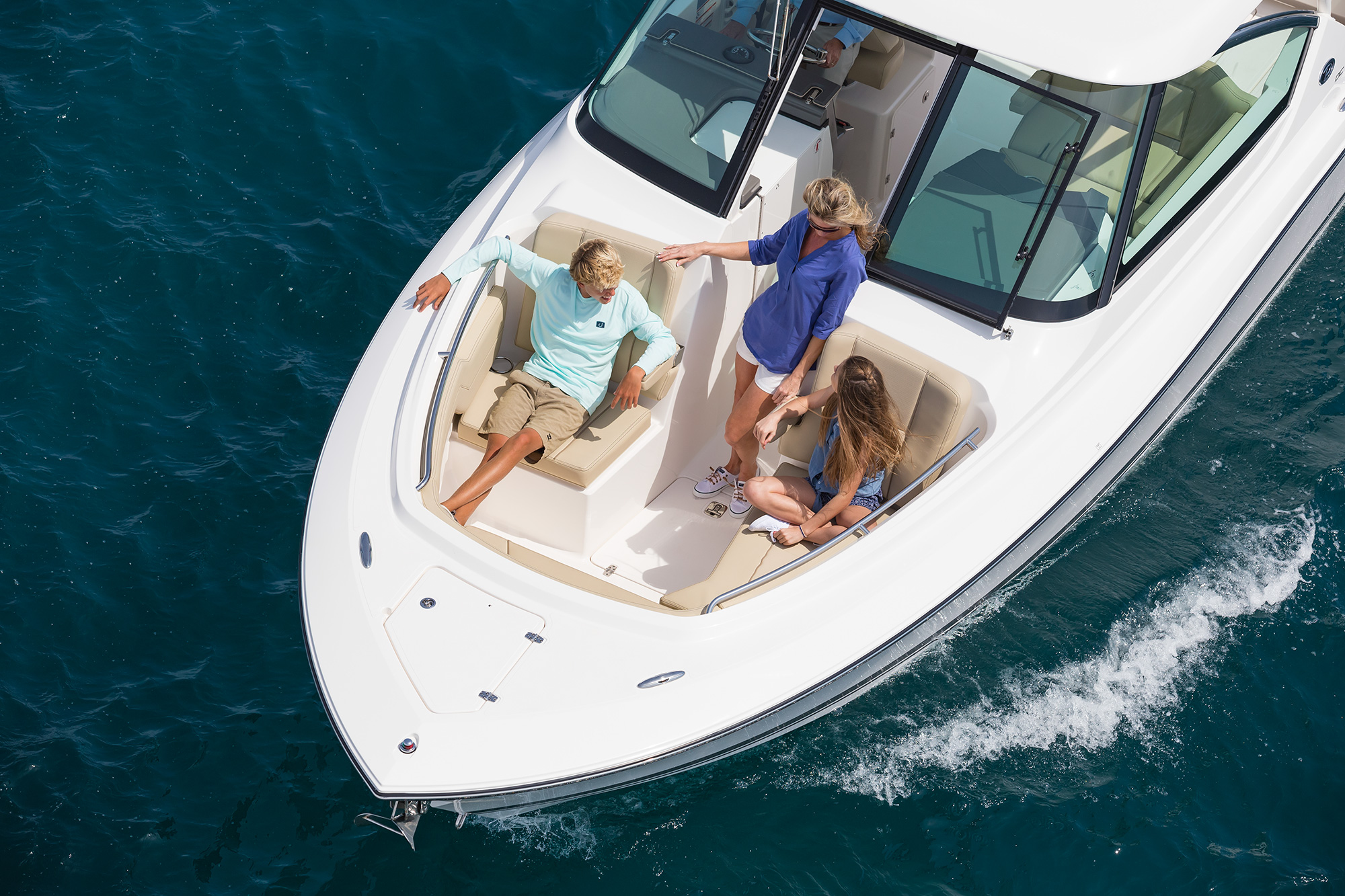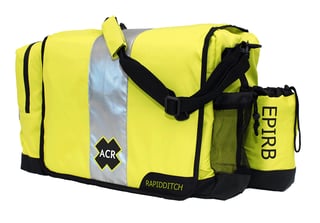What to Pack in your Boating Ditch Bag

When disaster strikes at sea, a little preparation beforehand really can make the difference between survival and serious injury or death. Together with Personal Flotation Devices (PFD's) and/or a life raft, a properly prepared ditch bag is crucial to ensure that you and your crew survive long enough to be rescued. Here’s our list of what to pack in your ditch bag.
Why do I need a ditch bag?

Serious emergencies, such as one requiring you to abandon ship, typically happen unexpectedly and suddenly. Survival experts agree that in many cases, you simply won’t have the time required to rush around and gather up everything you think you’re about to need. In fact, you’re unlikely to have time to collect anything at all. That’s why it’s so important to pre-pack a ditch bag.
In an abandon ship scenario, a ditch bag should be kept in a quickly accessible location high on deck. You must be able to quickly grab it without having to re-enter your vessel. An ideal location is somewhere near to your life raft.
A ditch bag contains a collection of gear that has two main purposes: Ensure that rescue crews can locate you and ensure that you’re able to survive long enough for them to reach you.
Some of the items in your ditch bag are things you may already own, while others will require that you spend some money. But remember, your life and those of your crew may depend on the contents of the bag, so keep that in mind when doing your shopping.
1. EPIRB & PLB
An EPIRB (Emergency Position Indicating Radio Beacon) is a device that you’re likely already familiar with and hopefully already own.
Even if you already have an EPIRB installed at the helm or elsewhere on your center console, in the stress of an emergency, it’s very easy to forget about it. For that reason, we recommend that you have a second one packed inside your ditch bag.
In the unlikely event that your EPIRB should fail, many survival experts recommend also including a PLB (Personal Locator Beacon) in your ditch bag. A PLB fulfills the same role as an EPIRB in that it’s designed to alert rescue services to your emergency and help guide them to your location. Therefore, even if your EPIRB functions as intended, its battery will eventually fail and at that point, if rescue has not yet arrived, your PLB can then be activated to take over.
Experts recommend that both the EPIRB and PLB both be models that operate on 406MHz for maximum connectivity and visibility with the USCG and other rescue agencies.
2. Handheld waterproof marine VHF radio, GPS & satellite phone
A waterproof VHF radio will allow you to contact shore-based rescue services while a handheld GPS unit will allow you to provide your precise location to them.
If you’re out of range of reaching shore-based services, the radio will still allow you to contact nearby marine traffic within range.
Ideally, you should select a radio that includes a minimum of 6 Watts of transmit power, and which is powered by lithium AA or AAA batteries as well so that it can be kept going by simply replacing the batteries, without the need for a charging station.
If your budget allows for it, consider also purchasing a satellite phone. Pre-store Coast Guard phone numbers in it and buy an extra battery pack as well. Even better, consider buying a solar charger to go with it to ensure that your satellite phone continues operating. Being able to communicate with rescue services but also with your loved ones can make a real difference to your mental well-being in the stress of a survival environment.
A satellite phone is however not considered a replacement for a radio, so if budgets are tight, then prioritize the handheld VHF radio and a GPS unit instead.
3. Signalling devices
Once rescuers begin searching for you, and particularly once they near your location, you need a means by which to get their attention. This is where the importance of signalling devices really comes in.
There are various options that you can consider packing in your ditch bag but here are some of our recommendations.
- Marine style whistles: Good for making a noise at water level.
- Fog horn: Canister options are louder but a mouth-operated version will be operable for as long as someone has breath.
- Signaling mirror
- Floating rescue streamer
- Dye markers: Marks the sea around you with a fluorescent green dye that is easily seen from the air. It lasts for 30-40 minutes and according to one study, was found to be more effective than many other similar measures.
- Electronic distress lights/strobe lights: Can be pre-attached to lifejackets.
- Radar reflector
4. Flares
Pack multiple types in your ditch bag. Consider including a combination of orange smoke flares, handheld flares and aerial parachute flares.
All of the flares you pack in a ditch bag should be of a very high-quality and ideally also be SOLAS-grade flares (these typically exceed USCG regulations) due to their reliability and long-distance visibility.
When using a handheld flare, be sure to hold it far away from your life raft to prevent ‘slag’ (burnt or burning material) from the flare from landing on and damaging your raft.
We also recommend that you add some light sticks which can be used for light when making notes, doing general tasks in the dark, signaling, and even just to provide some comfort in the dark. These are available in various colors that burn for different lengths of time.
5. First aid & other medical kit
Having a basic first aid kit in your bag will give you the ability to treat any injuries that may have occurred while abandoning ship, but your ditch bag should go much further than just first aid. Be sure to include the following:
- A tourniquet
- Medical shears
- Prescription medication - should any be required by your or your crew
- Seasickness tablets
- Space blankets (for treating hypothermia and general warmth): One for each crew member
- Sunscreen
- Lip balm
- Drinking water pouches. Available in 4.2 fl. oz. pouches and just enough to sustain life. Not to be used unless all other sources of water have been exhausted.
Optional:
- Anti diarrhea tablets
- Glucose tablets
- Emergency food rations
6. Tools
Your ditch bag should include a variety of tools necessary to make your day-to-day survival as easy as possible. Specific tool recommendations vary but here are some general guidelines for what to pack in a ditch bag:
- Waterproof flashlight with extra batteries
- A folding knife with a rounded tip and a serrated edge.
- Handheld fishing kit (can be bought as a kit or you can make up your own)
- Duct tape designed for use in water.
- 3M High Reflectivity tape
- Compass
- Toilet paper, hand sanitizer, wet wipes and Ziploc bags.
- Waterproof camera. According to one source, it’s something that many shipwreck survivors wish they’d had.
Make laminated copies of the passports of everyone onboard and pack those into your ditch bag as well.
Nobody wants to find themselves having to abandon ship, but if the worst should happen and you’re forced to bail into a life raft to await rescue, you’ll be grateful that you had a properly prepared ditch bag. In today’s article, we gave you our recommendations for what to pack in a ditch bag. If you found this useful or if there’s anything that you think we’ve missed, be sure to let us know! And of course, check in regularly for more great content.
